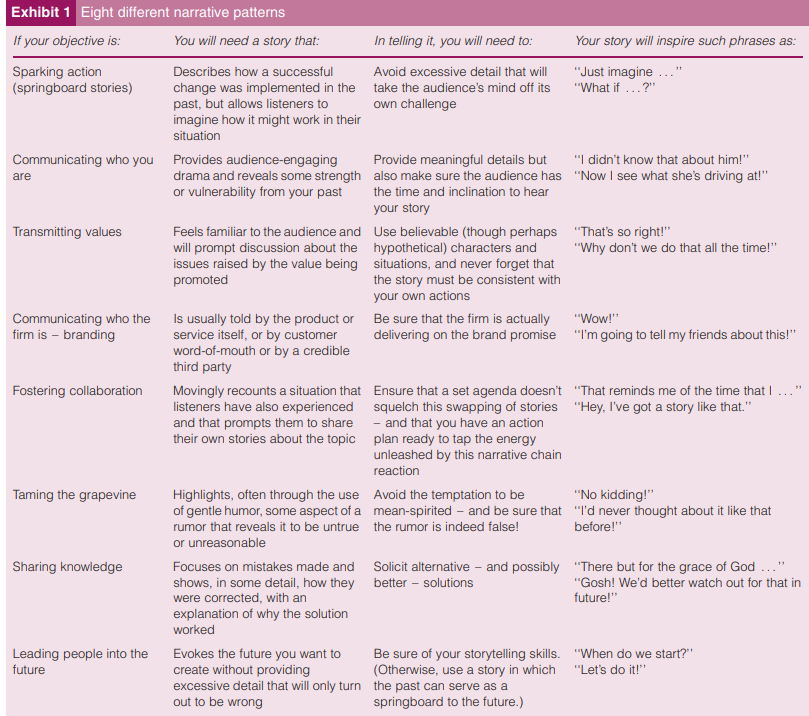Every brand has a story, and some just tell it better than others. Learning to present yours well can be the difference between brand engagement and brand abandonment. And we don’t have to tell you which side of that coin you want to be on.
Storytelling, isn’t that for kids?
The origins of storytelling date back centuries ago, originating with visual stories such as cave drawings. It then shifted to oral traditions in which stories were passed on from one generation to the other by word of mouth. Next was the shift to words formed into narratives, including written, printed and typed stories. Finally, the printing press, the Internet and social media platforms have completely shifted the way we tell stories and who we tell stories about. Everyone has become the storyteller of their own stories. In today’s world, the writing on (Facebook) walls can be read by anyone - not just the visitors of our cave.
More and more businesses are starting to implement the art of (transmedia) storytelling in their communication strategies. We currently live in a world wherein advertising companies are relentlessly trying to catch our attention 24/7 with colourful videos and images whilst we are reading the news, watching a video on YouTube and more. This makes it difficult for readers to stay focused on the initial post, leading to a decrease of interest and readers moving on to something else. So, it is becoming increasingly important to come up with strategies to keep your audience hooked to your story from the beginning until the end.
This is when storytelling comes into play. Storytelling simply refers to the activity of telling or writing a story. It is a fundamental human experience that unites people and drives stronger, deeper connections. This connection is important as it’s becoming harder to keep readers captivated. Storytelling enables us to develop a deeper connection with the audience. Try to remember a list of 15 words, or try to remember a story where all those 15 words are featured in – which one will be easiest to remember?
Use Strategic Storytelling to influence
Strategic storytelling can be implemented in many ways: in presentations, in blog posts, social media posts, news articles, marketing campaigns and so forth. Before you start writing, think about the main message you want to send to your audience and how you want them to receive it. This is when you will start to pick a storytelling strategy. It is important to pick a strategy before you start writing to stay consistent throughout your text and direct your audience in one direction. The platform will typically not change the storytelling strategy too much. The table below can help you through different storytelling – here called narrative – patterns.
 Denning, S. (2006). Effective storytelling: strategic business narrative techniques. Strategy & Leadership. Exhibit 1 page 43.
Denning, S. (2006). Effective storytelling: strategic business narrative techniques. Strategy & Leadership. Exhibit 1 page 43.
Nicolas Alaerts, Director at Mercuri Urval Belgium, brings attention to the importance of vertical and horizontal storytelling. It is a skill usually taught to management consultants and seen as a crucial way to bring a powerful story (often through PowerPoint). Listening to someone’s presentation that simply does not catch your attention is a nightmare to both the presenter and its audience. However, this can typically be solved with a very simple trick - start implementing vertical and horizontal flows in your slides.
Vertical flow: Titles are a crucial part of your slides
Ideally, the title represents the main takeaway of your slide. Try not to use titles such as “Executive Search” for four slides long but try to summarize in a couple of words what the content of the slide is about. By doing so, you increase your audience’s attention and keep them engaged. Another important factor to consider are your listeners: what are they interested in? Perhaps you have done a lot of research about a certain topic and want to show your knowledge to your audience – but ask yourself: is this relevant? No, try to speak your audience’s language. Generally, the content of the slide solely reinforces the point you are trying to make.
Horizontal flow: titles tell stories
When going through your slides, look at the flow of your titles. Ask yourself if they fit together and if they create a cohesive whole. Let your titles tell a story, starting at the first slide and ending at the final one. There is a tool in PowerPoint that may help you: select “outline view” and you will only be able to read the titles. If the flow of the titles does not make sense, try to revisit the logic of your presentation.
Titles also play a crucial role in our lives. We are increasingly starting to read horizontally nowadays. When we wake up and scroll through our social media or our news feed, we are not reading the entire post, but we are typically only scanning it. We are not forming any depth to our comprehension of the story; our focus is solely on the horizontal storyline. We are consuming titles, headlines and reviews, not stories anymore. This makes the importance of eye-catching and attention-grabbing titles even more important, in (news) articles as well as in presentations.
 Denning, S. (2006). Effective storytelling: strategic business narrative techniques. Strategy & Leadership. Exhibit 1 page 43.
Denning, S. (2006). Effective storytelling: strategic business narrative techniques. Strategy & Leadership. Exhibit 1 page 43.